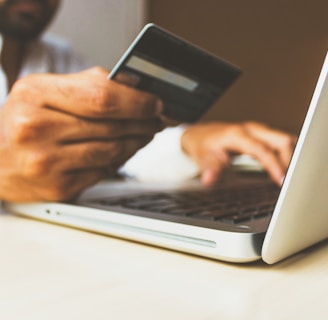The Psychology Behind a Winning Product Page
Learn the psychology-backed strategies that make product pages convert—from emotional triggers to layout choices that build trust and desire.
HIGHLIGHT
6/13/20252 min read


The Psychology Behind a Winning Product Page
What makes someone click “Add to Cart”? Science has the answer.
There’s more to a product page than photos and pricing.
Behind every high-converting product page is a powerful mix of psychology, storytelling, and design strategy.
At ROMAG, we study not just what looks good—but what makes people feel good enough to take action.
Here’s what really drives conversions—and how psychology helps turn browsers into buyers.
1. First Impressions Trigger Emotion, Not Logic
Before people read a word of your description, they feel something.
The human brain processes visuals in 13 milliseconds—faster than the blink of an eye.
That means your:
Hero image
Layout spacing
Color scheme
Font choice
...all send subconscious signals.
Use clean layouts, trust-building colors (blues, whites, earth tones), and lifestyle images that show the product in use. It reduces hesitation and creates instant connection.
2. Decision Fatigue Is Real — Simplify the Flow
Too many options or too much information overwhelms the brain.
Great product pages are not about saying everything. They’re about saying the right things in the right order.
Key layout hierarchy:
Emotion-first image
Headline that connects
Clear pricing and CTA
Short emotional description
Logical follow-up details (sizing, material, delivery)
Trust signals (reviews, guarantees, social proof)
Make it easy for the visitor’s brain to say “yes.”
3. People Buy Stories, Not Specs
You’re not just selling a product—you’re selling a transformation.
Great product copy taps into desire, identity, and emotion.
Ask:
What will this make the buyer feel?
How will it change their day, their look, their self-perception?
What story does it tell the world when they wear or use it?
At ROMAG, every product description is written to spark connection before conversion. That’s what creates loyal customers—not just one-time buyers.
4. The Trust Layer: Reviews, Guarantees & Real Photos
Psychologically, humans fear making the wrong choice. That’s why trust elements are crucial.
What builds trust on a product page:
⭐ Real reviews from real people
✅ Return policies
📸 Customer-submitted photos or authentic mockups
🔒 Secure checkout icons or trust badges
This is where Cialdini’s principle of Social Proof comes in:
If others love it, I probably will too.
5. Scarcity & Urgency Still Work—If Done Right
Want your visitor’s brain to prioritize action? Create a sense of urgency. But avoid manipulation.
Use real scarcity like:
“Only 2 left in stock” (if true - if not true, don't use at all)
“Limited print drop” or “Seasonal release”
Countdown timers for special promos
Combine that with consistency and transparency, and you get conversions without harming your brand trust.
6. Mobile First, Always
Over 70% of online shoppers browse on mobile.
That means every psychological principle above—emotion, clarity, trust, urgency—must work in vertical scroll.
Use large buttons, collapsible sections, and clean visual hierarchy so the mind doesn’t get lost on the way to clicking Buy Now.
Conclusion: Psychology Is the Foundation of Conversion
Winning product pages aren’t just designed. They’re engineered for the human mind.
They speak to our fears, desires, and instincts—with clarity, confidence, and care.
At ROMAG, we build every page like it’s a conversation—guided by what feels right and works better.
So next time you visit a product page that just “feels right,” now you know—it’s psychology at work.
Want to see it in action?
→ Browse ROMAG.Store
contact@romagcompany.com
Proudly building global brands from bold ideas. © A&M ROMAG Company 2024
